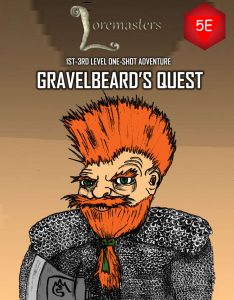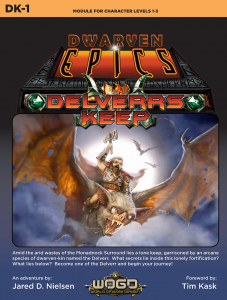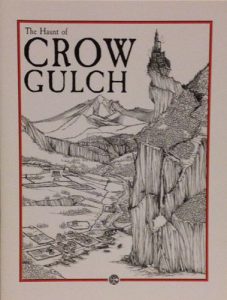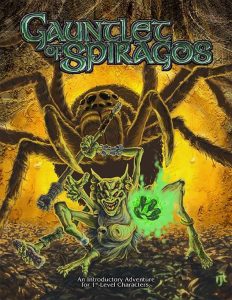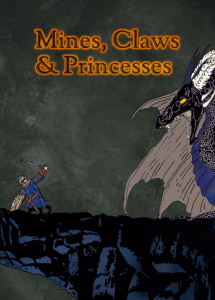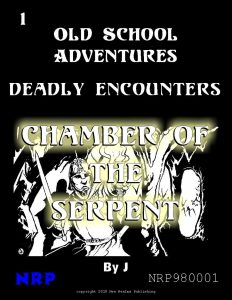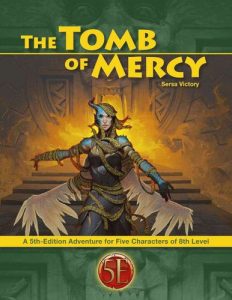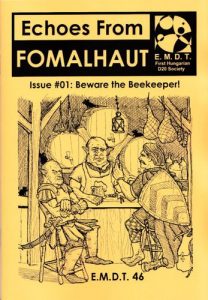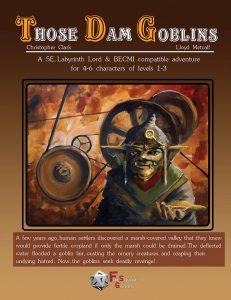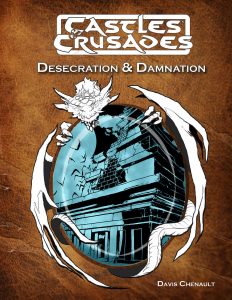
By Davis Chenault
Troll Lord Games
Castles & Crusades
Levels 4-6
All along the banks of the Vindig River people worshipped the river goddess. She blessed the people and kept the trolls at bay. But in time, she grew weary and to guard them she set statues upon the river to watch over the people, and then she left them to their own devices. But no troll fears stone, nor the forgotten promises of a goddess. They have returned to the Vindig, but this time with a vengeance.
This is a twenty page adventure detailing a small/dangerous river journey and a small river temple. Full of flavor but too long for what it is, it takes a lot of words to get where it’s going which results in confusion on more than one occasion.
The Trolls can be frustrating. This adventure is FULL of flavor. It’s got a nice river/delta setting, kind of Lewis & Clark or Mississippi River rafting setting. Everything is wet, there’s a big wide river with some rapids and sheer cliffs in places. Slippery mud and slick rock stair. Sunken temples wet. Rules for swimming, storms, drowning, rapids. Ancient protective river gods and beast-like men ruining their temples. It’s got a nice slow pace and realism to it without it going too far down the “roll every 10 minutes of game time for heat exhaustion” nonsense. There’s this primitivism that would be at home in Harn or maybe even Runequest. Not bronze age, but a good rural river thing.
It’s also quite a short adventure for the page count. The last seven are just monster stats. Before that we get an opening battle with the beast-men/trolls that is the hook. Then some village and priest roleplay, wilderness wandering monsters and the river rules, and then a four-ish encounter temple. The adventure is mostly a very conversational writing style with little of the traditional encounter/key format. Bolding runs in to DM text runs in to bolding.
This can lead to confusion in places as multiple areas kind of overlap with little distinction as to the location change. The editing really let this one down.
The wilderness is a big part of this, but the wandering table is a poor, at best. Just a list of monster stats without detail on actions. Farmers, sure, but what are they doing out in the wilderness? I like a little pretext to get the old DM juices going.
At another point, in some rough rapids, there’s a little dungeon entrance that’s left for the DM to develop, as a reward for those who brave the rapids instead of going around them. For the amount of content I would have expected a one or two room cave, at least, with some loot. (And as an aside, that’s a perfect example of putting things out of the way. If you look behind the waterfall, behind the stairs, you should find something.)
The encounters, what there is, are weirdly long, repeating background text, and quite a bit overly detailed.
The seeds are planted for a longer adventure, visiting more temples, and the setting that leaks through the detail is interesting. It’s just really simple for the page count provided.
This is $10 at DriveThru. The preview is six pages. The second and third page show the initial encounter and gives you a good idea of the style of writing to expect. Note the three or four paragraphs on page three and the amount of text there. https://www.drivethrurpg.com/product/240688/Castles–Crusades–Desecration–Damnation?affiliate_id=1892600
Oh, and as an aside, here’s a paragraph I found funny. Yeah, I think we get, mostly, what is meant, but sometimes you need the regional setting product to decipher things precisely …
“The stealing of an idol by a vindehoyer is a bad omen and may indicate that Atharioon has given up on the Vindig River and Urshoonga is coming to claim what he says is his. Since the Zjerd are invading the region, a PC will make the connection as Stroomsh is a Dorstmin.”

